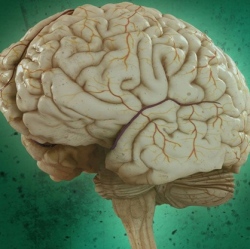
A flashing light therapy might help ward off Alzheimer’s, say US scientists after promising trials in mice. The team found shining a strobe light into rodents’ eyes encouraged protective cells to gobble up the harmful proteins that accumulate in the brain. The perfect rate of flashes was 40 per second, a barely perceptible flicker.
The researchers say the approach should be tested in humans. They are already seeking permission from the US regulator, the Food and Drugs Administration, and have set up a commercial company to develop the technology.
Build-up of beta amyloid protein is one of the earliest changes seen in the brain in Alzheimer’s disease. It clumps together to form sticky plaques and is thought to cause nerve cell death and memory loss.
Researchers have been looking for ways to prevent plaque formation using drugs, but the results have been disappointing.
But Dr Li-Huei Tsai and colleagues at the Massachusetts Institute of Technology think they have found another way, using light.
The mice that they studied were genetically engineered to have Alzheimer’s-type damage in their brain, Nature journal reports.
When the mice were put in front of the flashing light for an hour, it led to a noticeable reduction in beta amyloid over the next 12 to 24 hours in the parts of the brain that handle vision.
Doing this every day for a week led to even greater reductions. Likewise, light stimulation direct to the part of the brain that deals with memory – the hippocampus – led to reductions of beta amyloid there. The researchers say the light works by recruiting the help of resident immune cells called microglia.
Microglia are scavengers. They eat and clear harmful or threatening pathogens – in this instance, beta amyloid. It is hoped that clearing beta amyloid and stopping more plaques from forming could halt Alzheimer’s and its symptoms.
Dr Tsai said: "We are optimistic."
The scientists say, in the future, people could wear special goggles or sit in front of a light-emitting device to get a therapeutic dose of the strobe light. For the patient, it should be entirely painless and non-invasive.
